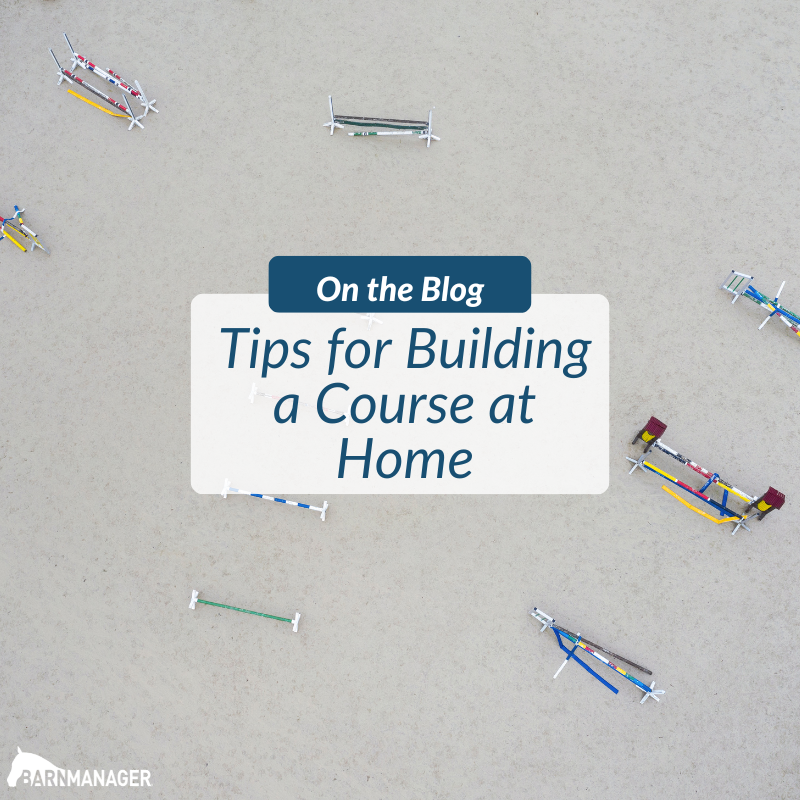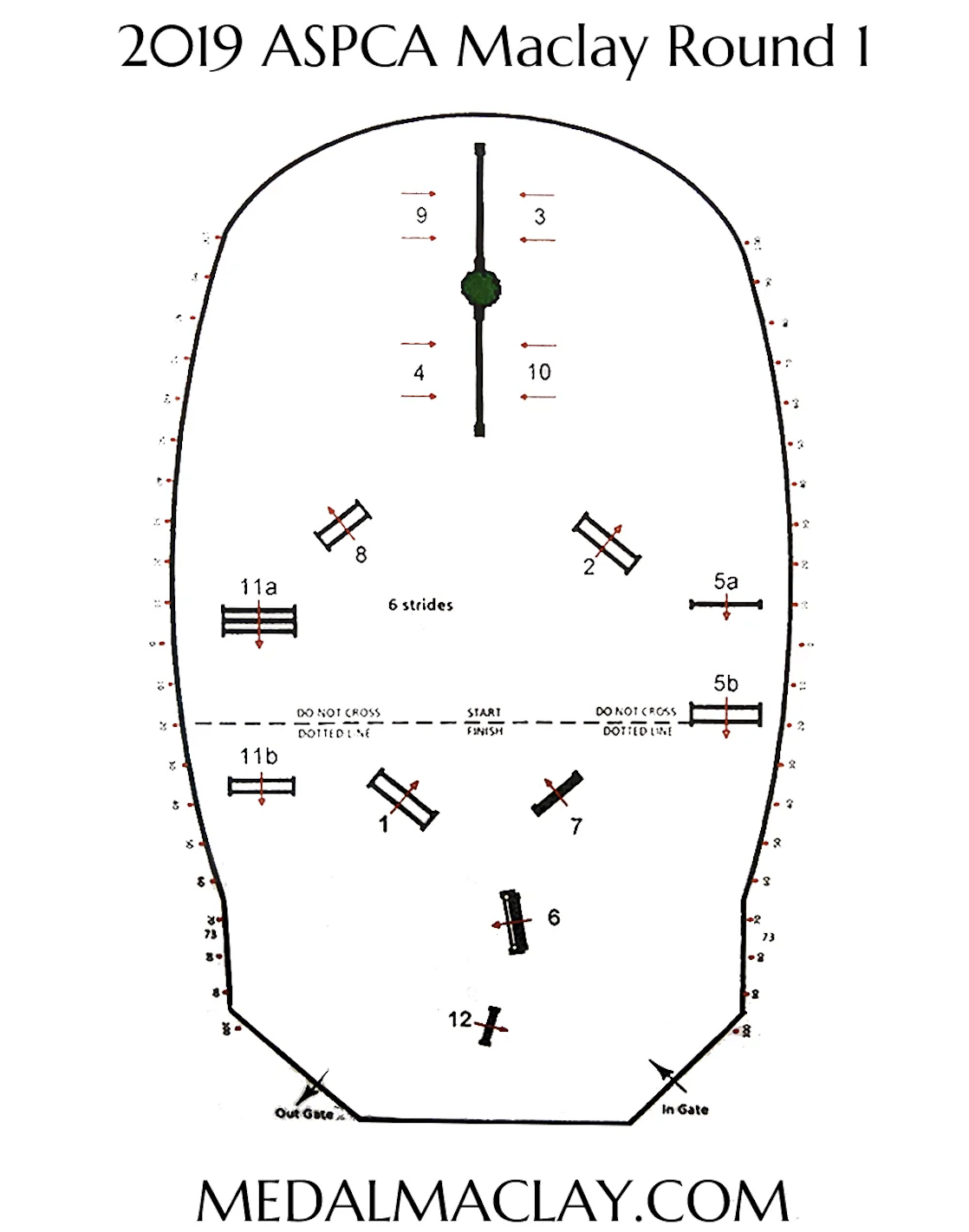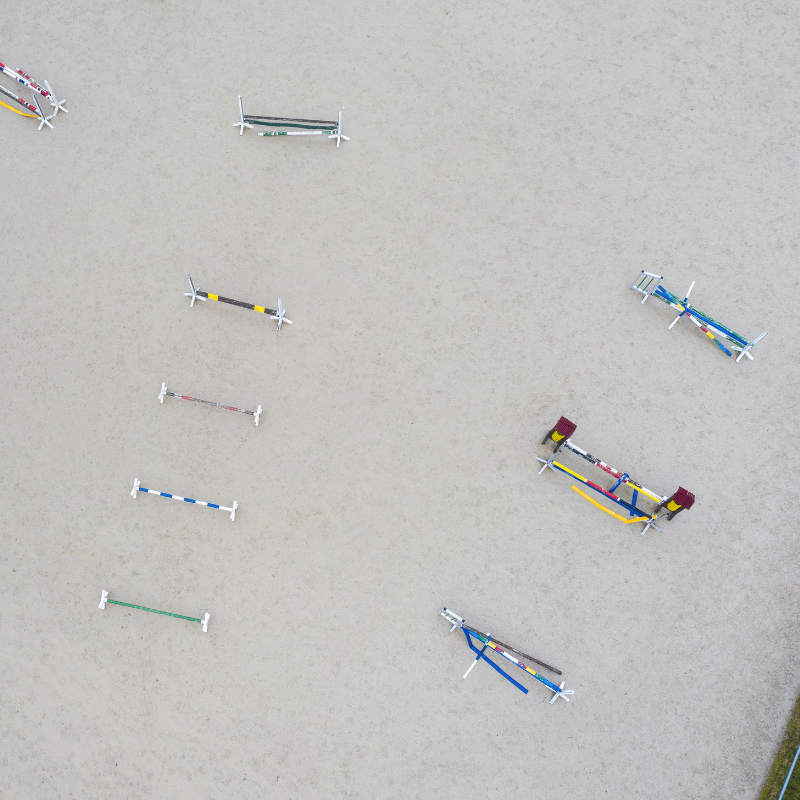
Tips for Building a Course at Home
Setting a course in your home ring is no easy task. To do it well, this skill requires planning and practice. Keep reading for tips from BarnManager on how to successfully set a course at your farm.
Know Your Ring
An important part of coming up with a course is understanding the size and shape of your ring. For example, you will build a different style of course for a long and narrow ring than you would for a square-shaped arena. It is important to acknowledge these differences so you can set a track that rides well and makes good use of the shape of your particular ring.
Consider Your Goals for Your Horse
When setting a course, think about what skills you are working on improving with your horse. Try to add those types of fences or tracks into your course so you can practice them regularly. This could be a trot jump, one stride, skinny fence off of a tight turn, or bending line on the right lead.
Find Inspiration

Course maps from previous hunter, jumper, and equitation classes or finals are often available online. Although your arena may not fit all of the jumps or allow the same number of strides in a line, pick certain interesting parts to recreate. Also, if you are at a horse show and see a course you like, take a picture of the course map to save for later.
Map Out Your Ideas
Before you start moving standards and flower boxes around, draw out your plan on a piece of paper. Even if you have a solid idea in your head, writing it down will help you visualize the entire course and ensure you have the correct number of standards and poles required. List the types of standards and fill, objects such as flower boxes, walls, or gates, you want for each jump so when it’s time to start doing the heavy lifting things will go more quickly.
Make Sure Your Jumps Match
When designing your course plan, think about the types of standards, poles, and fill you have. Try to make the standards and colored poles match in each line, similar to what you would find at a horse show. Although you may not have enough paired standards or colored rails to coordinate everywhere, it is nice to make the course as appealing as possible.
Build a Versatile Course
Most barns cater to a variety of disciplines and have a mix of riders and horses at different levels of experience. When building a course, try to include options that work for hunter, jumper, and equitation riders. Aim to create courses that can be adjusted to accommodate beginners as well as those that are more advanced. When you build a challenging course, include a few welcoming fences that are easy to make small for horse-and-rider combinations of all levels.

Include a Gymnastic
If your ring is large enough, consider adding a gymnastic line somewhere. This is a nice option that gives you the ability to mix it up so horses and riders are doing more than practicing courses. Gymnastics are an excellent way to work on straightness and adjustability. Depending on the difficulty of the gymnastic, it can be a great exercise for riders of multiple levels and disciplines.
Setting an effective course requires both planning and heavy lifting so make sure to recruit some barn friends to help!
Have questions about utilizing BarnManager or want to give it a try for yourself? Request a live demo here!